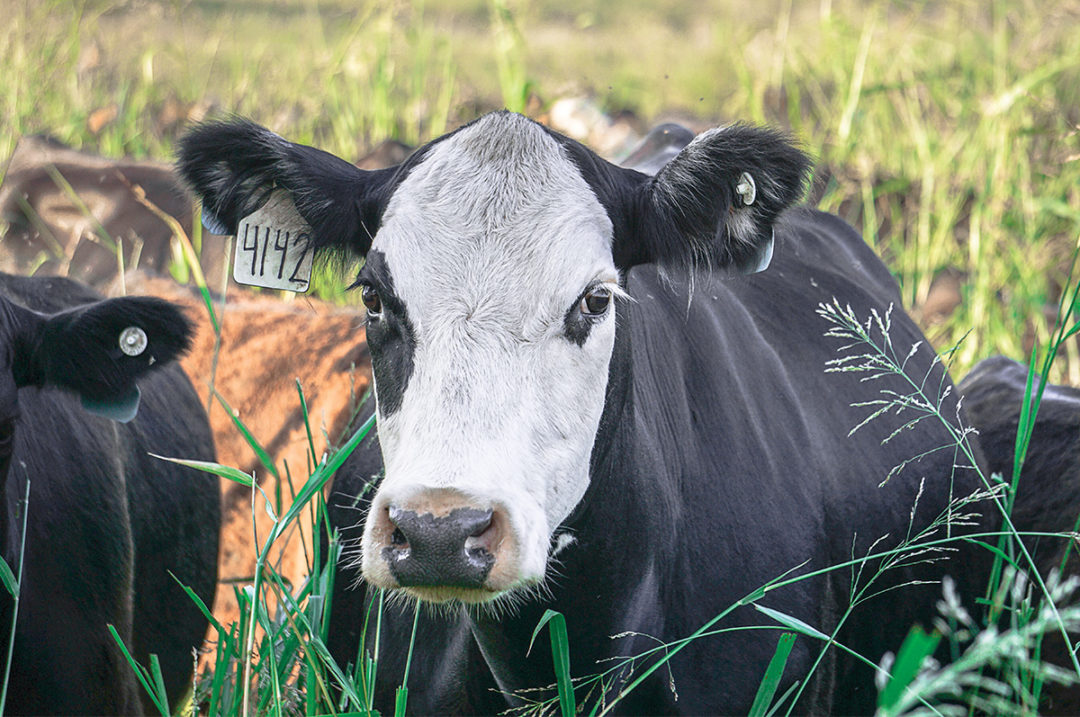Spring turnout is right around the corner, and after a year of drought, it’s no surprise producers are hopeful for a better outlook in 2023. This winter has brought milder temperatures and some much-needed moisture to parts of the U.S., but simultaneously gave us plenty of dreaded mud.
This management hassle – tied with elevated feed costs, low hay inventory and never-ending inflation – has producers as eager as ever to get their cows out on fresh spring forage in hopes of lowering their operating expenses. Even though the grass is literally greener on the other side of the fence, producers need to be aware of some nutritional implications when transitioning to this higher-quality stand.
We ask a lot of our cows because, from the moment she puts a live calf on the ground, we have exactly 82 days to get her rebred. This doesn’t seem like a whole lot of time, especially considering the many biological processes occurring in her system that require more nutritional intervention immediately following parturition. She needs to repair and involute her entire reproductive tract at the same time she’s initiating lactation. And don’t forget your heifers! They’re doing the same, but they’re also still growing, which is a vital function. Reproduction is not biologically essential, and it’s the first system to fail when nutrition cannot be met. In lay terms, if she can’t nutritionally support herself or her calf at her side, her biology won’t let her rebreed.
The idea of meeting these requirements with ample amounts of high-quality forage is the main reason why nearly 75% of producers calve in the spring. However, there’s a lot to consider for the upcoming breeding season if we want our cows and heifers to breed back in a timely manner. There's no doubt that early turnout can impact future grass growth, but let’s dive deeper into the nutritional composition of what’s out in that pasture. The first thing that comes to mind is grass tetany. This disease occurs when high potassium and nitrogen levels in the plant interfere with magnesium absorption in the ruminant, leading to a deficiency. This can and should be easily alleviated by providing a high-magnesium (high-mag) mineral for at least three weeks before turnout on lush forage. Minerals are a tiny component of a transition diet for rebreeding but can do big things when it comes to achieving your reproductive goals.
These are common concerns associated with spring turnout, and they’re well understood and managed by progressive producers. What many people don’t realize is that lush pasture may not solve all the cow’s nutritional needs. Washy grass is very palatable and immature, but it obviously has a high water content. This means that gut fill could possibly limit the intake of sufficient levels of energy. For example, if your grass is 20% dry matter (DM), a 1,300-pound lactating cow would need to consume approximately 130 pounds of fresh grass per day to meet her daily requirements. Unfortunately, research shows that cows will fill their rumen between 100 and 125 pounds – suggesting that, if your forage tests with high moisture content, they’re getting their fill of water and not enough energy to meet their rebreeding demands. The key to success is to at least maintain or increase energy intake going into the breeding season. If you fed your cows before they calved through the winter, they’re adapted to a high plane of energy and may need supplemented with dry forage or concentrate while grazing lush grass. Get your forages tested. While nutrient composition is important to evaluate, make sure to pay attention to the amount of DM in the analysis as well.
I’ve talked a lot about energy, but many producers associate their forage quality with the level of crude protein. Typically, they go hand in hand, but crude protein levels don’t exactly tell the whole story of how that protein is utilized by the animal. Nearly all protein in these immature forages is in the degradable form (RDP), meaning rumen microbes quickly break down these proteins to ammonia in the rumen. Not only can this lead to bloat issues, but if energy is limited, this ammonia can’t be converted into microbial protein and is absorbed directly into the bloodstream. High levels of ammonia in the blood have been linked to reduced reproductive efficiency, as well as impaired oxygen-carrying capacity. If you see cows panting on a beautiful cool spring day, it could be due to excess protein consumed at a high rate. It all could lead to extra stress and embryonic loss, even when you think you’re doing a service to your cows by allowing them to graze knee-deep green grass. Make sure that your cow diets are at least adequate in energy before concerning yourself over the protein level. Even providing a bale of dry hay with average to low protein content can help add fiber and dry matter to their diet, as well as dilute the amount of protein they consume daily.
Collectively, the breeding season typically coincides with spring turnout for most of the herds in the U.S. Females need to be at least maintaining or improving their plane of nutrition from their pre-calving program to have a legitimate chance of reproductive success. Although we assume our early spring pastures are more than enough to meet this demand, the grass isn’t always greener nutritionally. Before turnout, begin feeding a high-mag mineral and get your forages tested. Nobody knows what winter greenup will look like after last year’s drought, so be ready to balance cow diets with dry hay, an energy supplement or feed additives that improve forage utilization.











